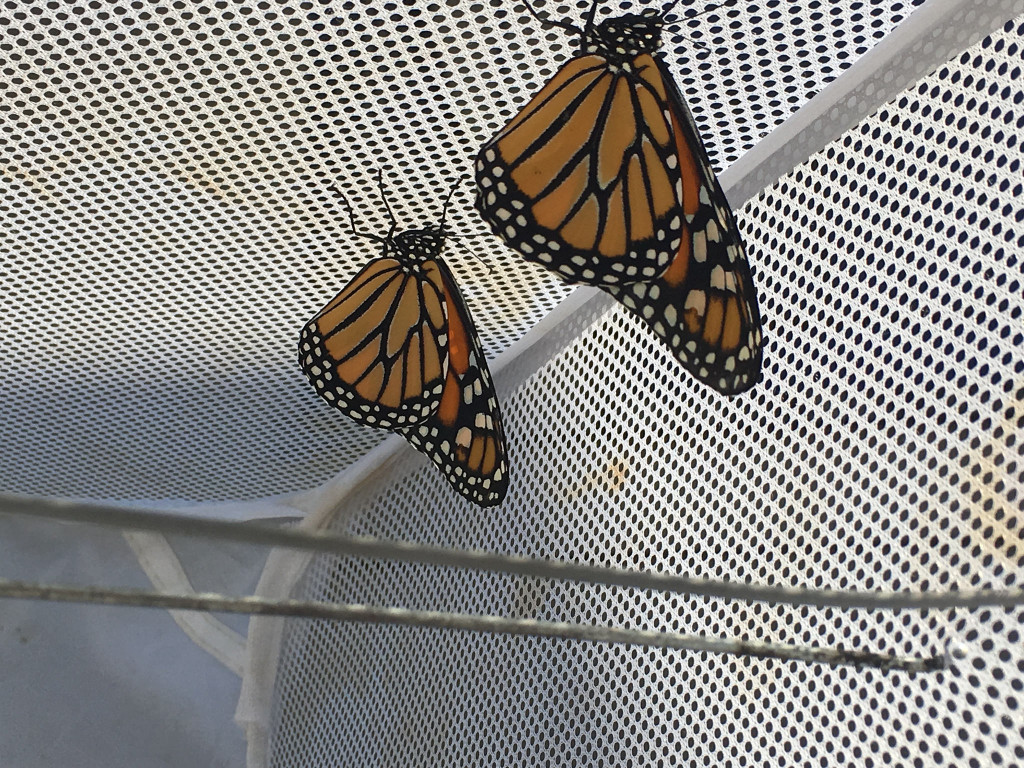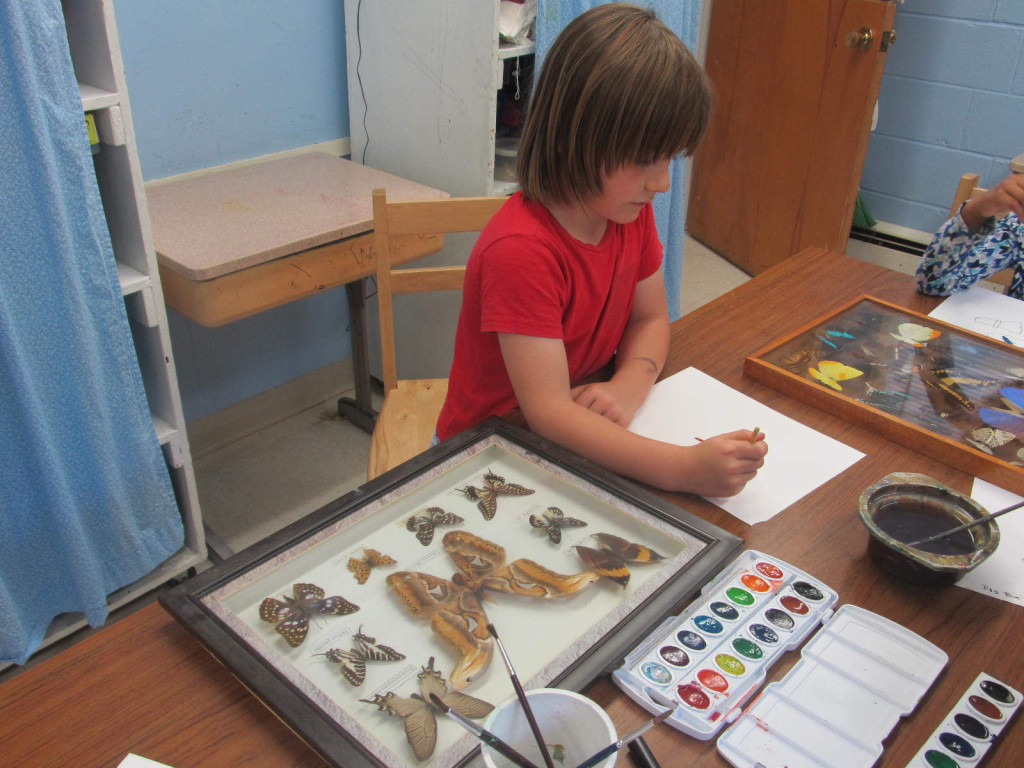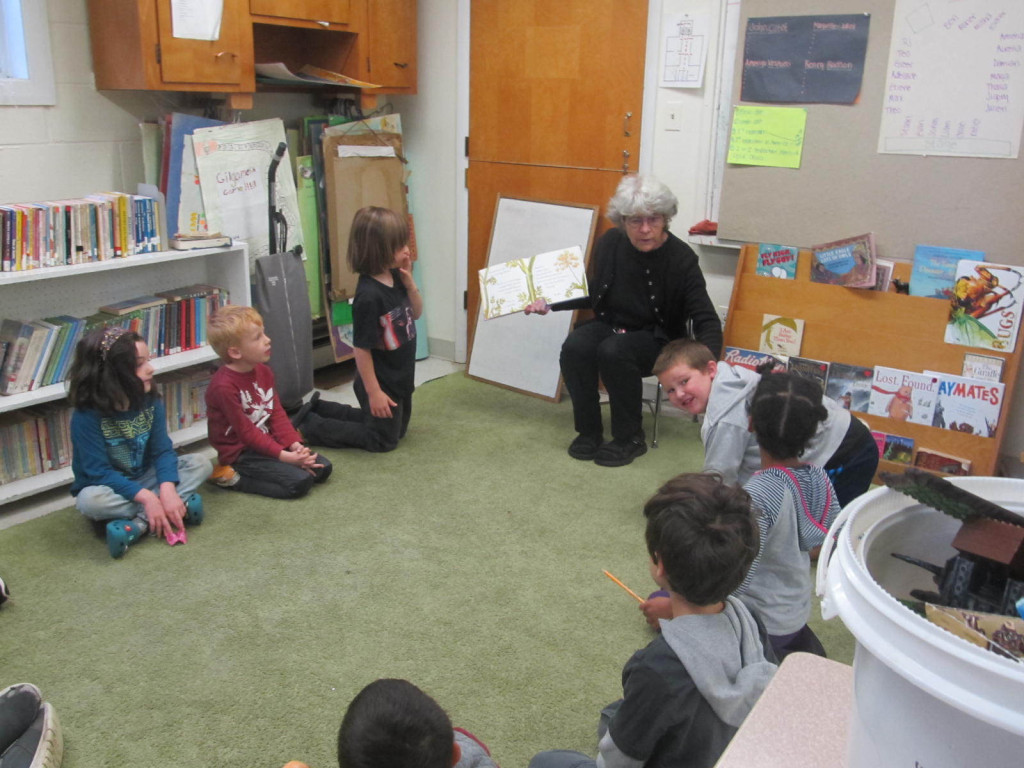 In January, we continued our butterfly class.
In January, we continued our butterfly class.
As always it allowed for wonderful conversations on big ideas.
One day we began to talk about butterflies, discussing that they don’t stay around to nurture their young. We talked a little about the difference between human, butterflies: learning from our parents or knowing through instinct.
But of course, the first thing we had to do was distinguish between “extinct” and “instinct”. One child gave the word instinct a try and used it within a familiar phrase…”trusting your instincts.” Another child picked up that smell was instinctual and the butterfly searches for the smell and then when it know the leaf “by smell”, it drops the egg and then dies.
Other children used the opportunity to wonder when was the very first butterfly? Each child’s thoughts always lead another child to add ideas. One child began to try and work out a thought – like humans evolved, maybe butterflies transformed OR like an egg was laying on the ground and out came a butterfly-nobody made it. And yet another brought in the idea that Jesus made it.
The independence of the butterfly also was intriguing. It might be in the egg for no reason, if we wait 20 something days and after a long time the butterfly may hatch.
 We began making a booklet which allowed children to draw and write about each of the stages of the butterfly as well as some of its special adaptation. We made butterfly hats/heads which included the antennae, compound eyes, proboscis, and palps. We read a book about Monarch migration (which is 2500 miles) to get to their Mexican winter home. It was hard to get a scale of this on a world map, as you might imagine.
We began making a booklet which allowed children to draw and write about each of the stages of the butterfly as well as some of its special adaptation. We made butterfly hats/heads which included the antennae, compound eyes, proboscis, and palps. We read a book about Monarch migration (which is 2500 miles) to get to their Mexican winter home. It was hard to get a scale of this on a world map, as you might imagine.
“It doesn’t look very far on the map.”
But a friend tried to clarify, “It’s a long way. It’s like you camp out and then go, then camp out again and keep on until it’s Mexico.” We read that it took about two months.
“How can they manage to fly that long way?” We compared it to our flight. In a fast jet they thought maybe 2-3 days to get to Mexico. Others thought 1 day.
We had read that they begin their migration in the Fall, return starting in February taking 2 months each way. The same butterfly, flies both directions. How can that happen?
Because it is such a long trip and takes so long to fly, we read a wonderful book called “Lifetimes,” that looked at many, many creatures and plants from Mayflies to Turtles to Sequoia trees. In each case we learned they had a lifetime, whether it was a day, 100 years or 4000 years. But…we had to talk about what does that word lifetime mean.
Again, some children used the word as it is often heard in common usage “once in a lifetime.” When we went on to define lifetime…it seemed clear than many children had a grasp and were able to say:
–When you start out a baby and get older and older – you know, a life cycle.
–First, you are born, then a child, then a sassy teenager (this gets a laugh all around), then an adult, then old man, then pass away, reincarnated if you believe it.
–Every living thing in the whole universe has its own way of thinking (lifetime?)
Because the Monarch is so unique we had to look at the word and concept of “generations”. Again, children had a pretty good idea about generations and could talk about grandparents, parents and their kids. Getting the butterfly generations was trickier. They have a 4 generation life cycle. Three of those life cycles are short (a matter of weeks) but the 4this a matter of months and that generation is the one that migrates. It was fun to use a calendar of 12 months and layout the short life cycles and then the long one. That would probably be worth following up on the next time we visit butterflies. Which we often do. Stay tuned.
